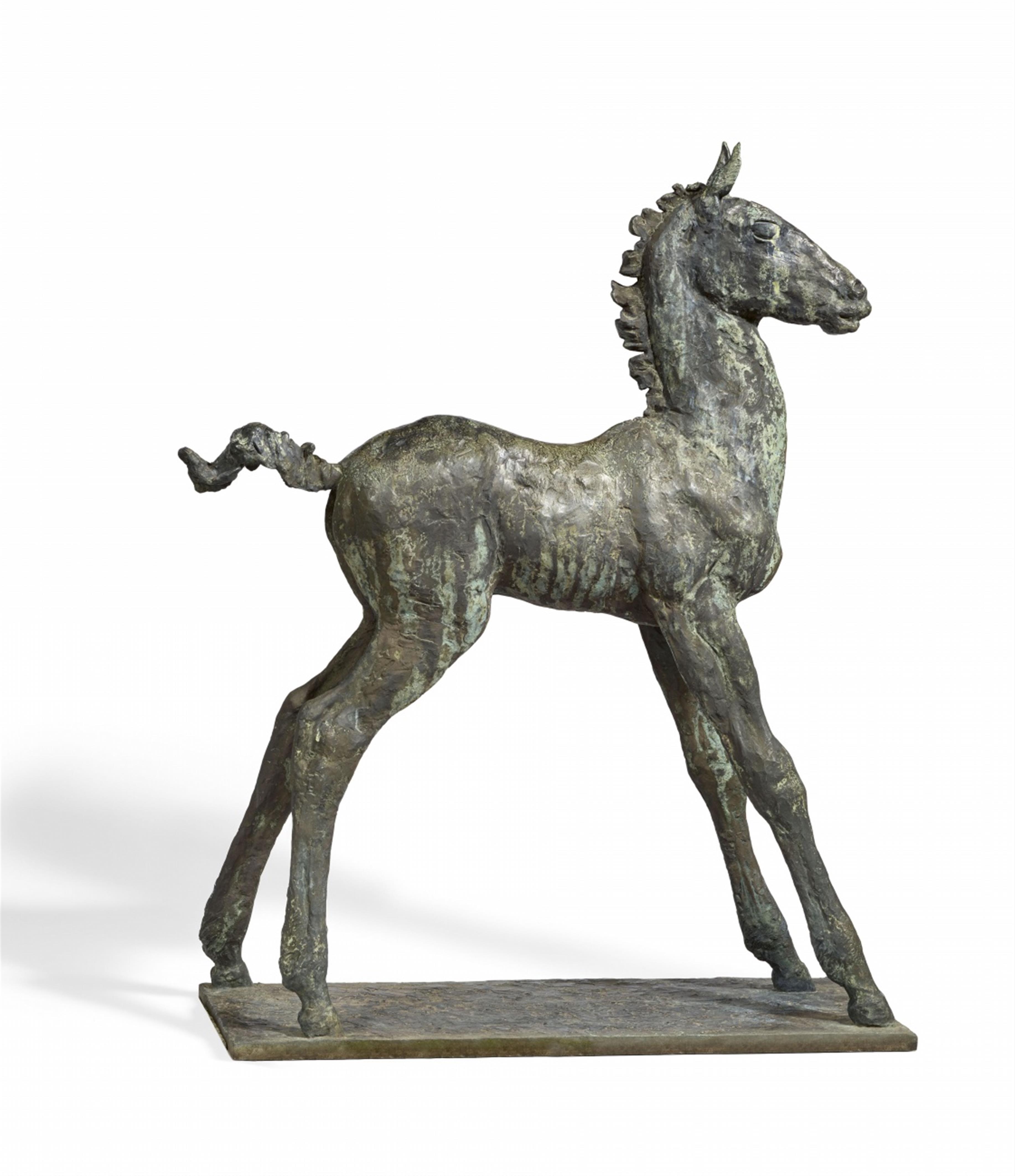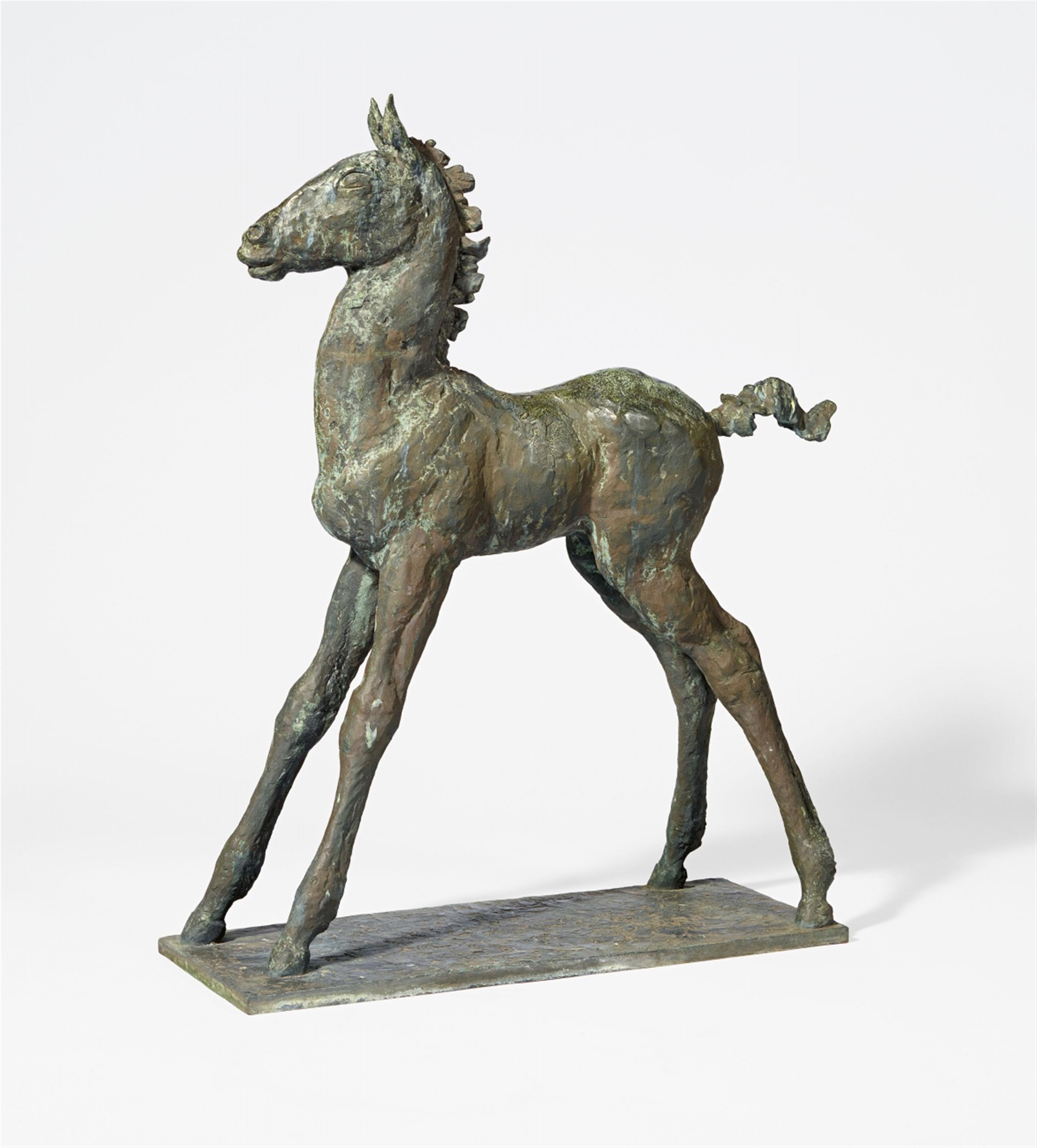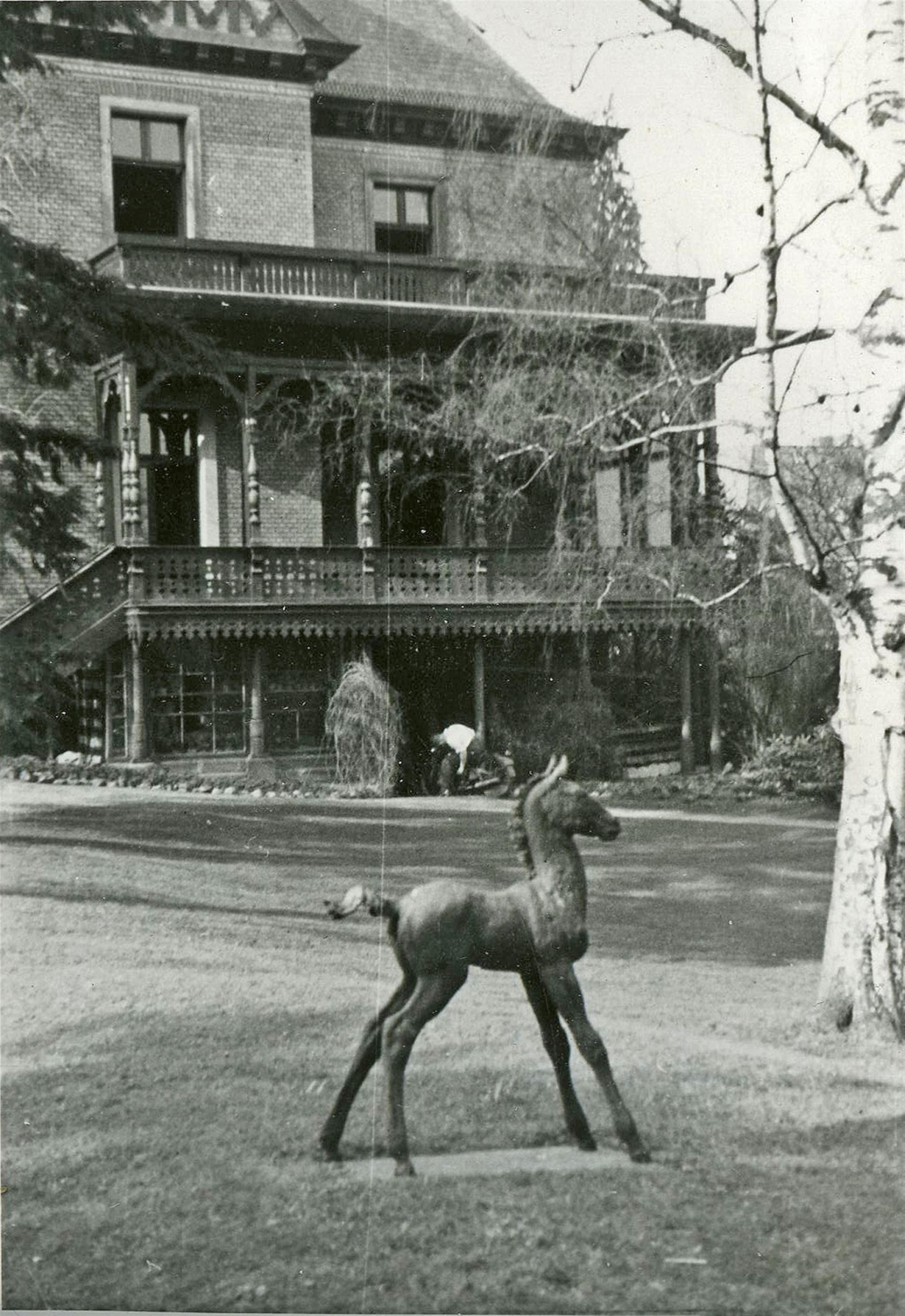Renée Sintenis
Großes stehendes Fohlen
1932
Bronze sculpture Height 102 cm Signed and dated 'R Sintenis 32' on the plinth to the left and with foundry mark "H. NOACK BERLIN FRIEDENAU" on left plinth edge. One of few exemplars. Liftetime cast. - Fine anthracite-brown patina, partly with greenish oxydation due to outdoor placement. Mit strichförmiger unauffälliger Bereibungsspur an der linken Halsseite. Inconspicuous linear trace of rubbing to left side of neck.
It is no coincidence that Renée Sintenis is counted among the 20th century's greatest animal sculptors - within Germany and internationally. With her immense capacity for empathy, she was in a position to capture the characteristic aspect of each animal and its inner state within a “fruitful moment” - the concept defined by Lessing to distinguish between the tasks of the visual arts and literature, based on the ancient sculpture of “Laocoon”. Her running elephants with their big, floppy ears and swinging little tails or her sleepy terriers lazily stretching themselves are delightful. Her creatures always know how to gain the empathy of their viewers and capture their interest.
Renée Sintenis's works were already well-known in the early 1920s, and she was personally famous as an embodiment of the modern woman. Tall, dressed in sportily fashionable clothes and with her hair done up stylishly, she rode her own horse through Berlin's Tiergarten and had her own car. At the parties of her gallerist Alfred Flechtheim she was an indispensable guest, who enriched a colourfully glamorous society made up of bankers, doctors and artists. Her sculptures were also greatly admired by her colleagues. She herself was portrayed by Kolbe and Nolde, among others.
Thus, in the 1930s, she possessed the financial means to have individual larger sculptures, such as our beautiful “Großes stehendes Fohlen”, cast in bronze - a few years later, this material would be reserved for military purposes because of the war and artists would no longer have access to the medium.
At that point, however, the foal was already “grazing” in the park of the Colsman family and permitting the family's younger members to live out their dreams of cowboys and Indians.
Adalbert Colsman, together with his wife Thilda, amassed a remarkable and exquisite collection of avant-garde art in Langenberg, which featured numerous works by Emil Nolde and Christian Rohlfs, among others. Through his sister Gertrud, Colsman was related by marriage to Karl Ernst Osthaus, founder of the Folkwang Museum in Hagen, which is where Christian Rohlfs had his studio. Colsman and Osthaus may thus have exchanged ideas about collecting art and also allowed themselves to become swept up by the surging cultural climate that the avant-garde of the 20th century's first decades brought with it in the fine and applied arts.
Catalogue Raisonné
Berger/Ladwig 129; Buhlmann142
Provenance
Collection Adalbert and Thilda Colsman, Langenberg (acquired in 1936); in family possession since
Literature
Hanna Kiel, Renée Sintenis, Berlin 1935, p. 55, p. 78 with full-page ill.; Hanna Kiel, Renée Sintenis, Berlin 1956, p. 72 with full-page ill.; Heinz Ohff, Noack - Die Geschichte einer Bildgießer-Dynastie 1897-1967, Berlin (1967), with ill. n. p.; Martin Damus/Henning Rogge, Fuchs im Busch und Bronzeflamme. Zeitgenössische Plastik in West-Berlin, Munich 1979, p. 100 with ill.
Exhibitions
Berlin 1958 (Haus am Waldsee), Renée Sintenis, cat. no. 55; Lindau/Bregenz 1961 (Palais Thurn und Taxis), Renée Sintenis - Joh. Michael Wilm, cat. no. 1






